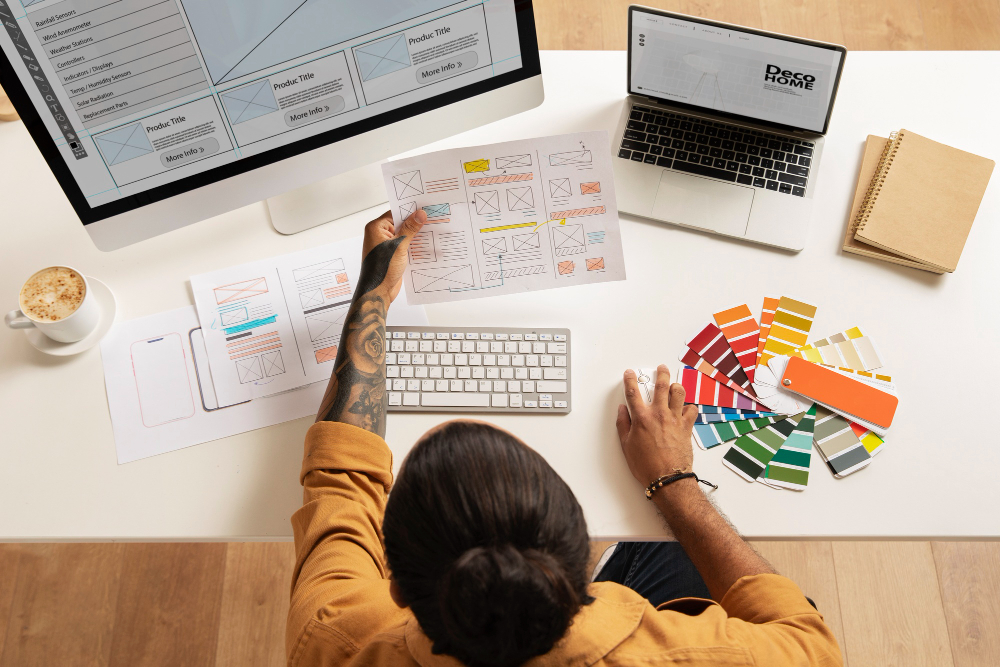3 Jul, 2023 | Ryles Melanie | No Comments
Launching a Startup: Navigating Design Challenges and Alternatives

Embarking on a startup journey entails careful consideration of numerous factors that contribute to the realization of your vision. The role of a designer is often a topic of debate in this process. In this article, we will explore the feasibility of launching a startup without a dedicated designer, while examining the challenges that may arise and alternative strategies to address them effectively.
The Significance of Design in Startups
Design plays a pivotal role in shaping the success of a startup. A well-crafted product or service can elevate user experience, establish a compelling brand identity, and differentiate the startup within a competitive landscape. The expertise of a designer in creating visually captivating and user-friendly interfaces holds immense value in capturing the attention of customers and investors alike.
Challenges of Launching Without a Designer
Commencing a startup without a dedicated designer presents specific challenges that necessitate thoughtful solutions:
Visual Identity: Establishing a strong visual identity is crucial for any business. Without a designer, crafting a cohesive and visually appealing brand image that resonates with the target audience can be a demanding task.
User Experience (UX): User experience relies heavily on design elements, including intuitive interfaces and seamless interactions. In the absence of a designer, ensuring a smooth and user-friendly experience may require additional effort and expertise.
Alternative Approaches
While having a dedicated designer is advantageous, several alternative approaches can be considered when launching a startup without one:
Collaborating with Designers: Seek opportunities to collaborate with freelance designers or design agencies on a project basis. Leveraging their expertise enables access to professional design input without the commitment of a full-time designer.
Outsourcing Design Tasks: Consider outsourcing specific design tasks to freelancers or design service providers. This allows access to specialized design skills for individual projects while maintaining control over costs.
Utilizing Templates and Tools: Leverage existing design templates, frameworks, or user interface (UI) kits to create functional and visually appealing interfaces. Numerous user-friendly design tools and platforms provide support for creating basic designs, even without extensive design skills.
Embracing a User-Centric Approach: Adopt a user-centric approach by emphasizing user feedback and conducting thorough user testing. Engaging with the target audience early on can yield valuable insights for refining the product or service, even without extensive design expertise.
Launching a startup without a dedicated designer may present challenges, but there are alternative strategies to address them effectively. Consider the following approaches:
Collaborating with designers offers the opportunity to access professional design input without the commitment of a full-time designer. Collaborate with freelance designers or design agencies on a project basis, leveraging their expertise to create visually appealing and user-friendly interfaces. This collaborative approach allows for flexibility and cost control while benefiting from the skills and experience of designers.
Outsourcing design tasks is another option to consider. By outsourcing specific design tasks to freelancers or design service providers, you can tap into specialized design skills on a project-by-project basis. This approach allows you to maintain control over costs while obtaining professional design assistance when needed.
Utilizing templates and design tools can be helpful, especially for startups with limited design resources. Numerous design templates, frameworks, and user interface (UI) kits are available, enabling you to create functional and visually appealing interfaces without extensive design skills. User-friendly design tools and platforms provide support for designing basic layouts and elements, helping you create a professional look and feel for your startup.
Embracing a user-centric approach is essential for any startup, regardless of the availability of a dedicated designer. Prioritize gathering user feedback and conducting thorough user testing to understand the needs and preferences of your target audience. Engaging with users early on allows you to refine your product or service based on their insights, even without extensive design expertise. This approach ensures that your startup focuses on delivering a user-friendly experience that resonates with your customers.
While launching a startup without a dedicated designer presents challenges, it is important to remember that design is a multifaceted discipline that goes beyond visual aesthetics. Embracing alternative strategies such as collaborating with designers, outsourcing design tasks, utilizing templates and tools, and adopting a user-centric approach can help overcome design challenges and lay a solid foundation for your startup’s success.
In conclusion, while having a dedicated designer can greatly benefit a startup, it is possible to navigate design challenges and launch a successful venture without one. By exploring alternative approaches and prioritizing user-centricity, startups can create visually appealing and user-friendly experiences that resonate with their target audience. The key lies in being resourceful, adaptable, and open to collaboration, ultimately leveraging design principles to drive the success of your startup.